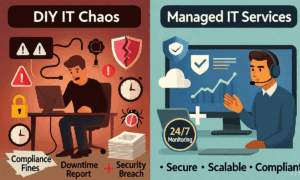A stable IT infrastructure is essential for performance and resistance in today’s Business. For businesses operating out of a tech-saturated city like Toronto, reliable onsite IT support is absolutely critical. Yet you can only ensure the delivery of the service level you require if you have a good SLA in place. Whether you are a small business or a large enterprise, a well documented SLA can help to give your staff AND your wallet a little piece of mind.
Scope of Services
The most critical part of an SLA, and one of the first, is the definition of the services the customer expects. This clause would advance to articulate the kind of support that is to be covered – hardware problem solving, software deployment, network upkeep, server refurbish etc. It also needs to define if the support is preventive maintenance or reactive support only. This is especially valuable for companies in need of physical tech support based on critical infrastructure or compliance reasons, but also anyone with a work issue.
Response and Resolution Times
The SLA must specify response as well as resolution times which are expected. These periods are usually differentiated due to the nature of the particular problem. For example, a server down could be an hour response, but a broken printer might be by the end of the business day, or something similar. Establishing clear time frames makes people accountable and reduces waste of time. Quick service is an important consideration for many of the bustling cities in Canada such as Toronto, and with ordering lunch, Yoyos don’t have time to wait for their food.
Availability and Scheduling
Another important aspect is managing availability and appointment scheduling. 24/7, business hours, or weekends and holiday onsite IT support. Are there any windows reserved for emergency services? For fast-paced businesses, it can be a game changer to know exactly when help in the form of financing become available to plan operations and manage risks.
Roles and Responsibilities
Any good SLA will clearly define the service provider’s (and the customer’s) responsibilities. Specific functions that could be handled by the provider might range from maintaining records, to regular testing of the system, to providing comprehensive service reports. On the other hand, the client may have to ensure that equipment is made available in a timely manner or nominate an internal focal person to be contacted. For any client / Onsite IT Support Toronto relationship, teamwork and communication are of utmost importance, and this section is intended to establish the levels of satisfaction and responsibility each party can expect.
Performance and Reporting Measures
In the case of success, your SLA should define the performance metrics and reporting you and your vendor need to execute on. You know the usual Key Performance Indicators (KPIs) like uptime, ticket close, or your customer satisfaction scores. Regular performance reviews provide the requisite checks and balances to keep the service provider on track and improve performance.
Procedures and Penalties for Escalation
If you have problems, what does it take for them to be gone- at what level are we now and whom do we call- what priority to be established. The contract can also contain penalties or service credits if the SLA is not met. That being a safety net that encourage to comply with the SLA.
Conclusion
A strong SLA forms the basis for any successful and healthy business-IT relationship. For companies to whom invests in Onsite IT Support Toronto, a detailed, comprehensive SLA brings in transparency, accountability and sustained service levels. By specifying all forms of support closely, you could reduce any IT interruptions and can focus more on the company growth and innovation.



































